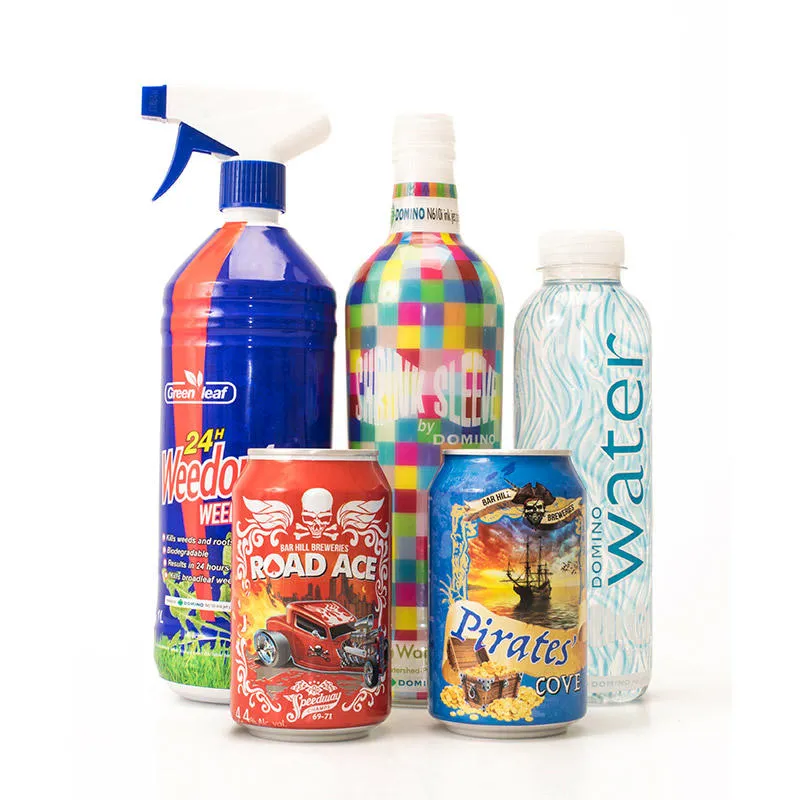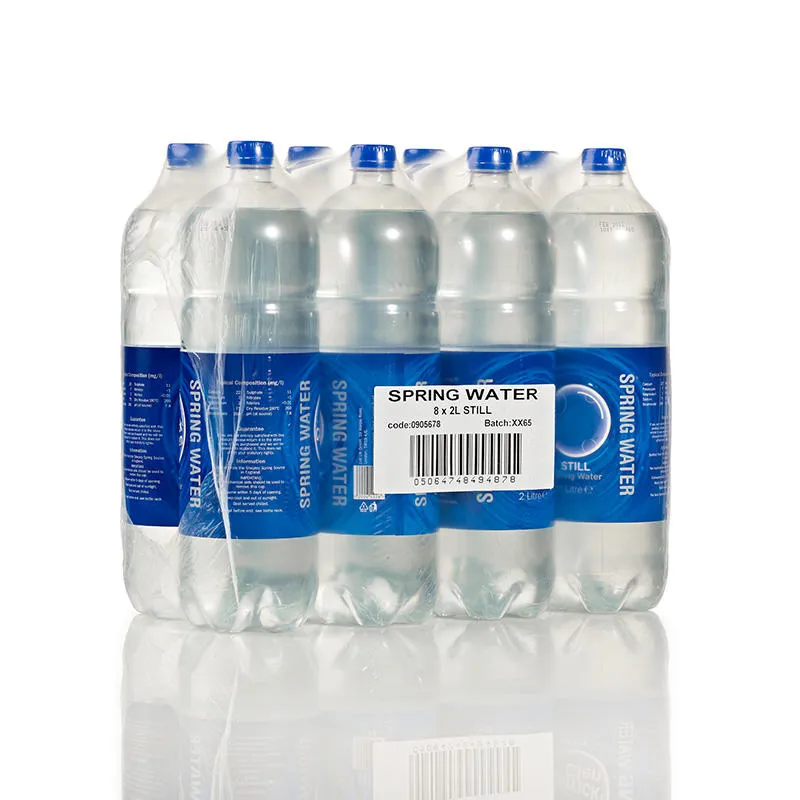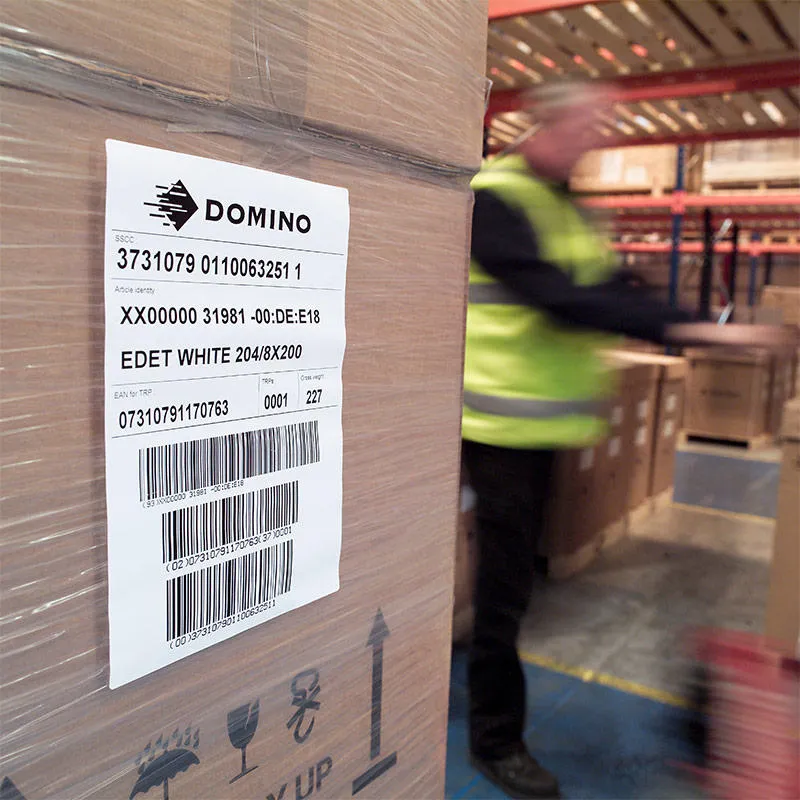Very few fables have been told about about shrink wrap and its all-too-important role in the supply chain. When you're in our industry? We might as well have erected a shrine.
Surprisingly, shrink wrap is actually a full category of products, rather than a product in and of itself. There are many different types, made from different materials, used to help package, protect and brand a vast array of products.
So, with this wide array of materials, what exactly is the best type of product markers for shrink wrap? Well, similar to how we recommend different types of product markers for, say plastic beverage bottles vs. glass - the type of coder depends on the type of shrink wrap.
What is shrink wrap made from and what is it used for?
Shrink wrap is made from a variety of materials and that material depends on what type of wrap you are talking about. The common denominator is that when heat is applied, it shrinks, becomes stronger and conforms to the shape of the wrapped product.
Beyond that, there are many subtle differences in the materials used for different types of shrink wrap.
Most people are familiar with the glossy PVC shrink films used to package bottles. But shrink wrap is used for a vast variety of different products. For instance, did you know that the safety seal on medicines and toiletries like toothpaste is a type of shrink wrap called shrink banding? Or how about the Polypropylene shrink films used to protect grocery items such as lettuce and broccoli? Or the shrink sleeves on bottles of condiments like ketchup and mayonnaise? Then there are the industrial shrink wraps, such as those used to cover and protect boats during the harsh winter months. Or the shrink tape used to connect and insulate electrical wires.
Let’s take a closer look a few specific uses of shrink wrap - and how to code those types of shrink wraps.
What are shrink sleeves & how do you code them?
If you were to ask someone a random person about shrink wrap, they probably have one idea of what it looks like - clear. Well, no offense, but that random person would be wrong.
Walk through your average local supermarket anywhere in the world and you will never be too far from a shrink sleeve. Thanks to their ability to be designed and redesigned with beautifully vibrant colors at relatively low cost. As a result, they've become incredibly popular in the FMCG world because they cover the entire container from stem to stern giving manufacturers the ability to redesign containers for seasonal efforts or all-out product redesigns without having to discard the containers themselves.
These sleeves are typically made from Polyvinyl chloride (PVC) or Polyethylene Terephthalate Glycol-modified (PETG), and often have a lower maximum shrink rate to prevent the design on the sleeve from distortion.
How is the print created in the first place?
In order to create the colorful images for shrink sleeves, our own Domino N610i, a UV inkjet press, has the capability of printing full color designs onto shrink sleeves. This UV inkjet gives factories the full benefit of digital Printing with instantaneous job changeovers, minimal substrate waste and variable data printing.
What about the traceability codes & date codes?
Beyond the imagery and branding, these sleeves are typically coded with date and traceability codes via continous inkjet. CIJ gives the consumer plenty of contrast between the shrink sleeve designs and the code itself and adheres nicely to the surface making these printers an easy go-to solution.

What is Secondary Packaging shrink wrap and how do you code that?
As for traditional shrink wrap - the clear stuff - the best option for product printing takes away any potential for the buyer to miss the code. What does that mean?
Labels.
When it comes to promoting goods to retailers, secondary packaging has a key role. The easier you make it for retailers to maneuver and display products, the better placed they will be to position, promote and sell items. Shrink wrap helps to secure multi-batch items and Domino North America has a selection of technologies specifically engineered to print on these materials.
Product Labelers
Domino's M-Series Print & Apply makes it easy to apply labels with high resolution and high speed. These variable data codes are are GS1 compliant - and, as we've seen with supply chain breakdowns, this is oh-so-important when guiding packaging and valuable products through the supply chain. In addition, it's important when protecting companies and consumers when there is a recall.
The labels themselves are eye-catching and easy for people to see in contrast to clear shrink wrapping, ensuring that traceability codes and date codes are easily found. Otherwise, with a standard code, a store employee may spend valuable time hunting for a code on the packaging - a big no-no when stocking shelves in a store.
Thermal transfer overprinting
Another option for coding onto wraps for secondary packaging is thermal transfer. The Domino V-Series has made it possible to mark shrink wrap films at speeds of between 40 and 90 six packs per minute. Take a look at this in action here.


What is the future of shrink wrap packaging?
From a logistical point of view, the use of shrink wrap has many 'clear' benefits. It’s a cost-effective way of stabilizing multi-packaged items and protects them from debris and moisture during transport. As we've seen over the past few years, transporting goods has only become more ubiquitous in everyday life.
Beyond shipping, shrink wrapping also provides a measure of protection against unwanted tampering with products, helping to preserve the safety of foods, medicines and toiletries. It can also provide eye catching packaging design and labelling to deliver compliance and drive consumer engagement.
How do you code it all - well, like everything in life, it depends. Make sure that you choose the right coder when you bring in a shrink wrap packaging machine to your facility.